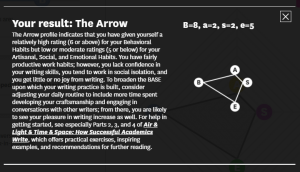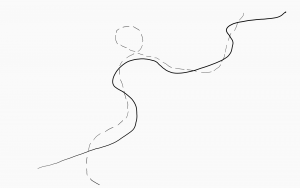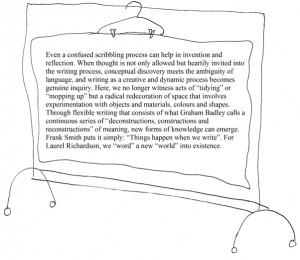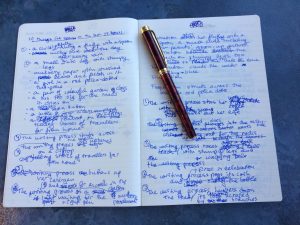We Write
Recent publications on writing, written or co-written by CLeaR academics.
Peer-reviewed books:
Carter, S., & Laurs, D. (eds.) (2017). Developing Research Writing: A Handbook for Supervisors and Advisors. Abingdon: Routledge.
A book by world experts on supporting research students’ writing. Designed to encourage, inspire and improve the advisory practice of providing writing feedback, this book will be relevant to all supervisors.
*Sword, H. (2017). Air & Light & Time & Space: How Successful Academics Write. Cambridge: Harvard University Press.
The book introduces the BASE model – behavioural, artisanal, social and emotional dimensions of academic writing – and describes the research behind it.
Peer-reviewed journal articles:
Carter, S., & Kumar, V. (2017). ‘Ignoring me is part of learning’: Supervisory feedback on doctoral writing. Innovations in Education and Teaching International, 54 (1), 68-75.
Sturm, S. R. (2017). From Aristotle to crime scene: A forensics of the academic essay. TEXT: Journal of Writing and Writing Courses, 39 (Special Issue: The Essay).
Sean explores the academic essay as a forensic site and, in Eyal Weizman’s words, ‘an entry-point from which to reconstruct larger processes, events and social relations, conjunctions of actors and practices, structures and technologies’ of the academy.
*Sword H., Blumenstein, M., Kwan, A., Shen, L., & Trofimova, E. (2017). Seven ways of looking at a data set. Qualitative Inquiry. DOI: 10.1177/1077800417729847
We demonstrate various ways of analyzing and interpreting Helen’s BASE questionnaire data about the writing habits of 1,223 academic writers from across the disciplines and around the world.

Alistair Kwan’s interpretation of the positional, directional, and dimensional features of a handwritten questionnaire response (part of the “data set” analysed by the article). Image taken from the article
*Sword, H., Trofimova, E., & Ballard, M. (2018). Frustrated academic writers. Higher Education Research and Development. DOI: 10.1080/07294360.2018.1441811. (First 50 eprints free: https://www.tandfonline.com/eprint/Y6HV7XeptATeBehntuZQ/full)
We take as their starting point Helen’s key finding that ‘frustration’ is the writing-related emotion most frequently mentioned by academics.
*Trofimova, E., & Nicholls, S. (2018). On Walking and Thinking: Two Walks across the Page. M/C: A Journal of Media and Culture, 21 (4).
Two writers, stuck in their university offices, decide to take their thoughts “for a walk” across the page. Writing from United Kingdom and New Zealand, they are separated by 18,000 kilometres and 11 hours, and yet on the page their paths meet. How does walking, imaginary or real, affect their thinking? How do the environments through which they move, and the things they see along the way, influence their writing? You are invited to join them on two short walks that reflect on their shared challenges as writers from two different strands of writing studies.
*Trofimova, E. (2017). Closet writing. TEXT: Journal of Writing and Writing Courses, 21 (1).
Evija discusses and analyses the vexed emotions of academic writers, including her own.
Popular publications:
Sturm, S. R. (2012). Let’s Do the Time Warp: Becoming Productive as a Scholarly Writer (essay), Te Ipu Pakore: The Broken Vessel (pesonal blog).
Sword, H. C. (2017). Processing the writing process (online article), Modernism/modernity (Modernist Studies Association journal’s Print Plus platform).
* Sword, H., Trofimova, E., & Ballard, M. (2018). Understanding the frustration of academic writers (blog post), LSE Impact Blog (The London School of Economics and Political Science).
Other resources:
*Sword, H. (2017) Online BASE tool
This free interactive tool aims to help writers diagnose their current writing habits and to develop a personalized blueprint for ‘broadening the BASE’. Launched in late 2017, the tool has already attracted more than 5000 unique visitors.

Description of one of the 16 Profiles identified by the BASE tool, according to the writer’s Behavioural, Artisanal, Social and Emotional habits. Snapshot from the tool’s website
* This research project has been supported by the Schuler Educational Enhancement and Development (SEED)
Fund’s “Resources for Writers” strand (2017-2019).


